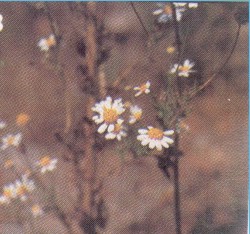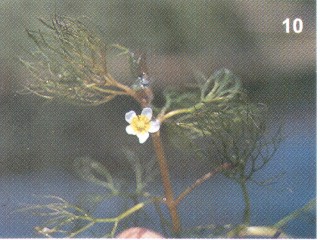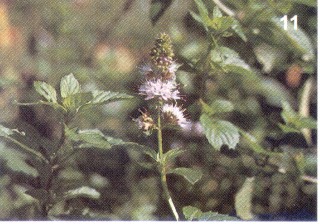home page

 What can be observed in the lake are green algae floating on the surface, forming an impressive green carpet, while the main plants of the lake are potamogeton species (myriophyllum spicatum, ceratophyllum demersum) that are submerged in the water and are very important for the ecological equilibrium of the wetland.
During springtime, blossoms of the aquatic species of the buttercup (ranunculus trichophyllys) float in the canals' waters. Nevertheless, the bed reeds are the predominant plants of the lake. Around the lake one can see chaste trees (vitex agnus-castus), myrtles (myrtus communis) orleanders (nerium oleander) as well as brambles (rubus sanctus) and willows (salix alba) climbing over plane trees (platanus orientalis). Behind the lake's banks common smilax (smilax aspera) and wild roses (rosa sempervirens) in addition with an impressive fern species the knotgrass (persicaria salicifolia), which inhabits only in clear waters, adorn the scene. The area doesn't host many native species. However, a very sparse species the lathyrus neourolobus has been mentioned in many journals, a species that can be very rarely found in Crete.
What can be observed in the lake are green algae floating on the surface, forming an impressive green carpet, while the main plants of the lake are potamogeton species (myriophyllum spicatum, ceratophyllum demersum) that are submerged in the water and are very important for the ecological equilibrium of the wetland.
During springtime, blossoms of the aquatic species of the buttercup (ranunculus trichophyllys) float in the canals' waters. Nevertheless, the bed reeds are the predominant plants of the lake. Around the lake one can see chaste trees (vitex agnus-castus), myrtles (myrtus communis) orleanders (nerium oleander) as well as brambles (rubus sanctus) and willows (salix alba) climbing over plane trees (platanus orientalis). Behind the lake's banks common smilax (smilax aspera) and wild roses (rosa sempervirens) in addition with an impressive fern species the knotgrass (persicaria salicifolia), which inhabits only in clear waters, adorn the scene. The area doesn't host many native species. However, a very sparse species the lathyrus neourolobus has been mentioned in many journals, a species that can be very rarely found in Crete.  The aquatic vegetation of the area is very important for the feeding of the inhabitant animals. Unfortunately, the enormous amount of animals that inhabit the lake, contribute to the decrease of the flora's diversity. Other species met in the wetland are many kinds of rushes (juncus species); water mints (mentha aquatica) figworts (scrophullaria auriculata) and lavenders (lavandula stoechas).
The aquatic vegetation of the area is very important for the feeding of the inhabitant animals. Unfortunately, the enormous amount of animals that inhabit the lake, contribute to the decrease of the flora's diversity. Other species met in the wetland are many kinds of rushes (juncus species); water mints (mentha aquatica) figworts (scrophullaria auriculata) and lavenders (lavandula stoechas).